Abstract
Trench leachate samples collected anoxically from shallow-land, low-level radioactive waste disposal sites were analyzed for total aerobic and anaerobic populations, sulfate reducers, denitrifiers, and methanogens. Among the several aerobic and anaerobic bacteria isolated, only Bacillus sp., Pseudomonas sp., Citrobacter sp., and Clostridium sp. were identified. Mixed bacterial cultures isolated from the trench leachates were able to grow anaerobically in trench leachates, which indicates that the radionuclides and organic chemicals present were not toxic to these bacteria. Changes in concentrations of several of the organic constituents of the waste leachate samples were observed due to anaerobic microbial activity. Growth of a mixed culture of trench-water bacteria in media containing a mixture of radionuclides, 60Co, 85Sr, and 134,137Cs, was not affected at total activity concentrations of 2.6 X 10(2) and 2.7 X 10(3) pCi/ml.
Full text
PDF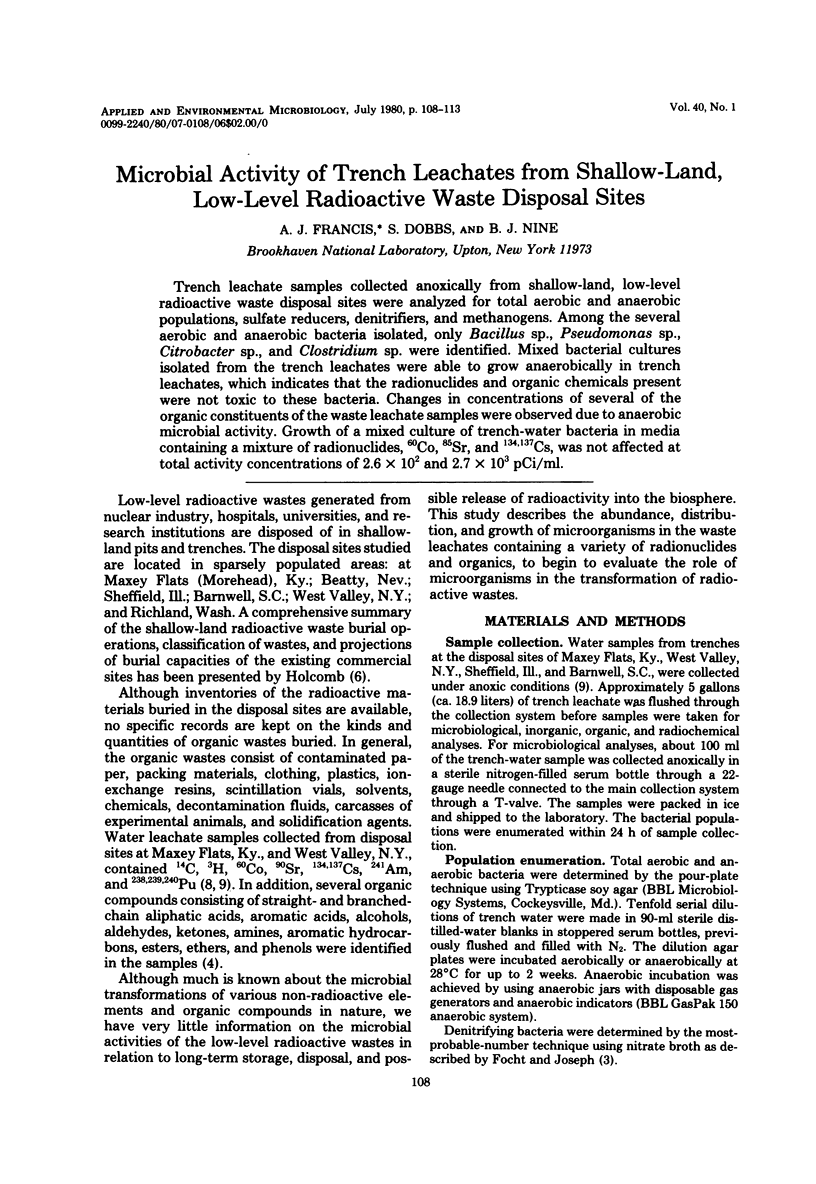
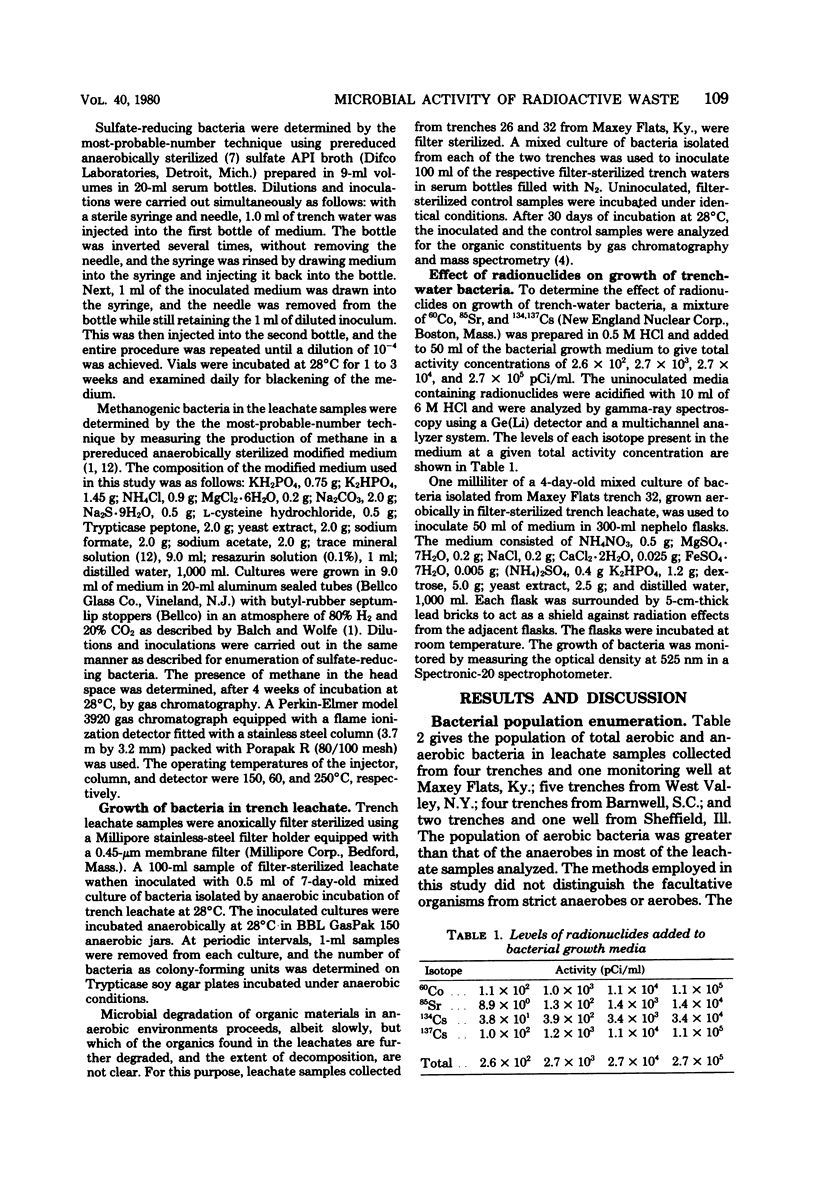
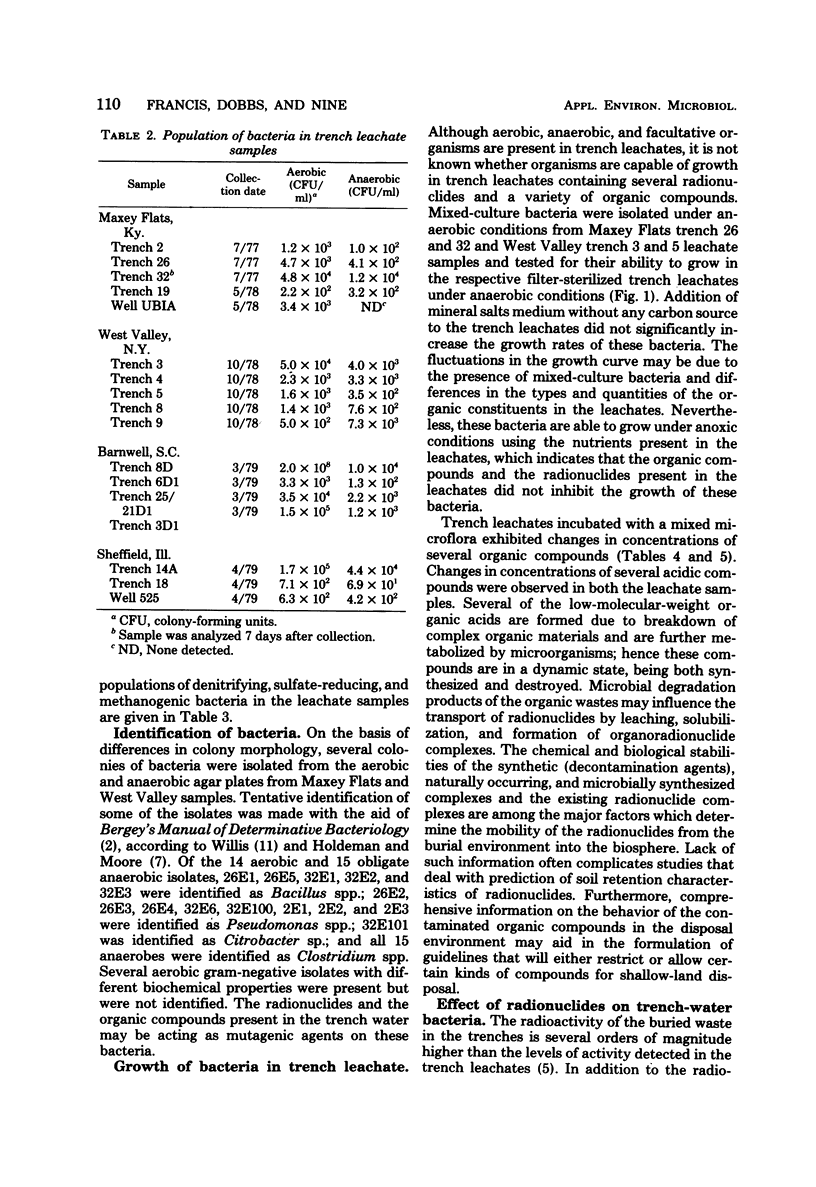

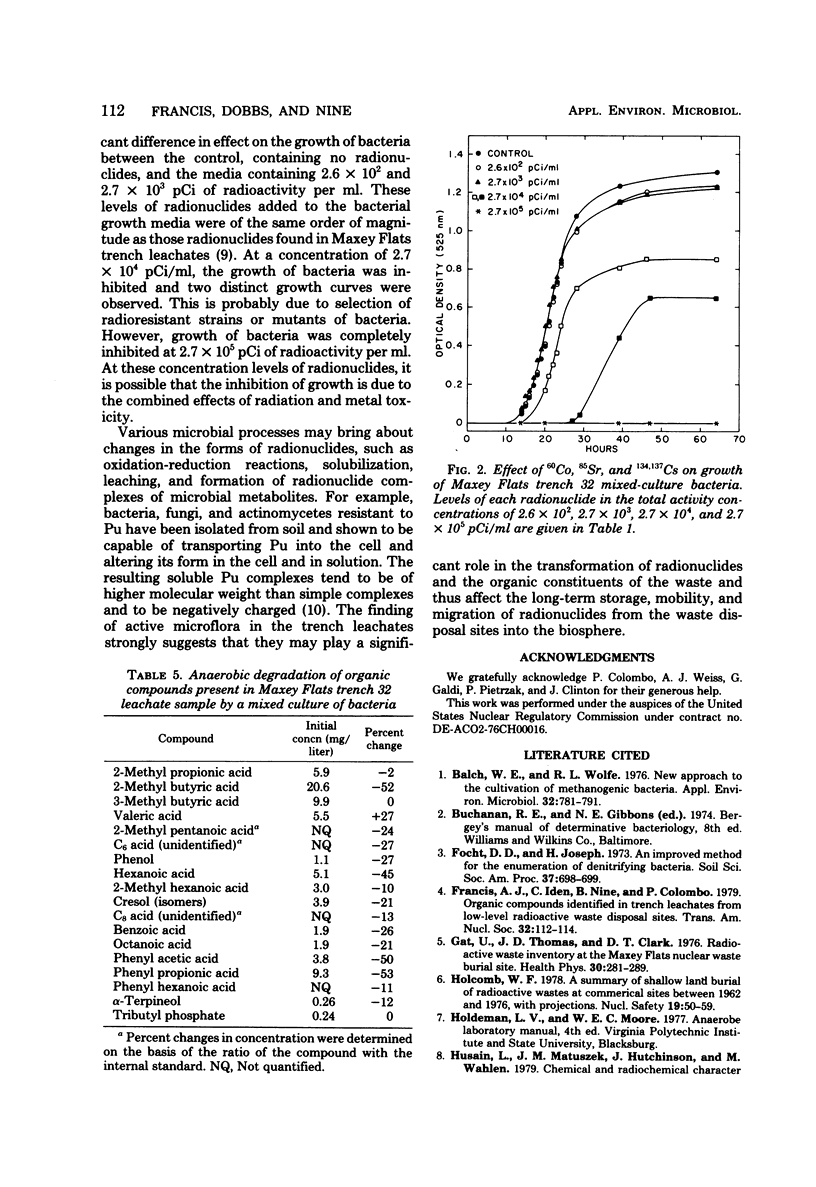
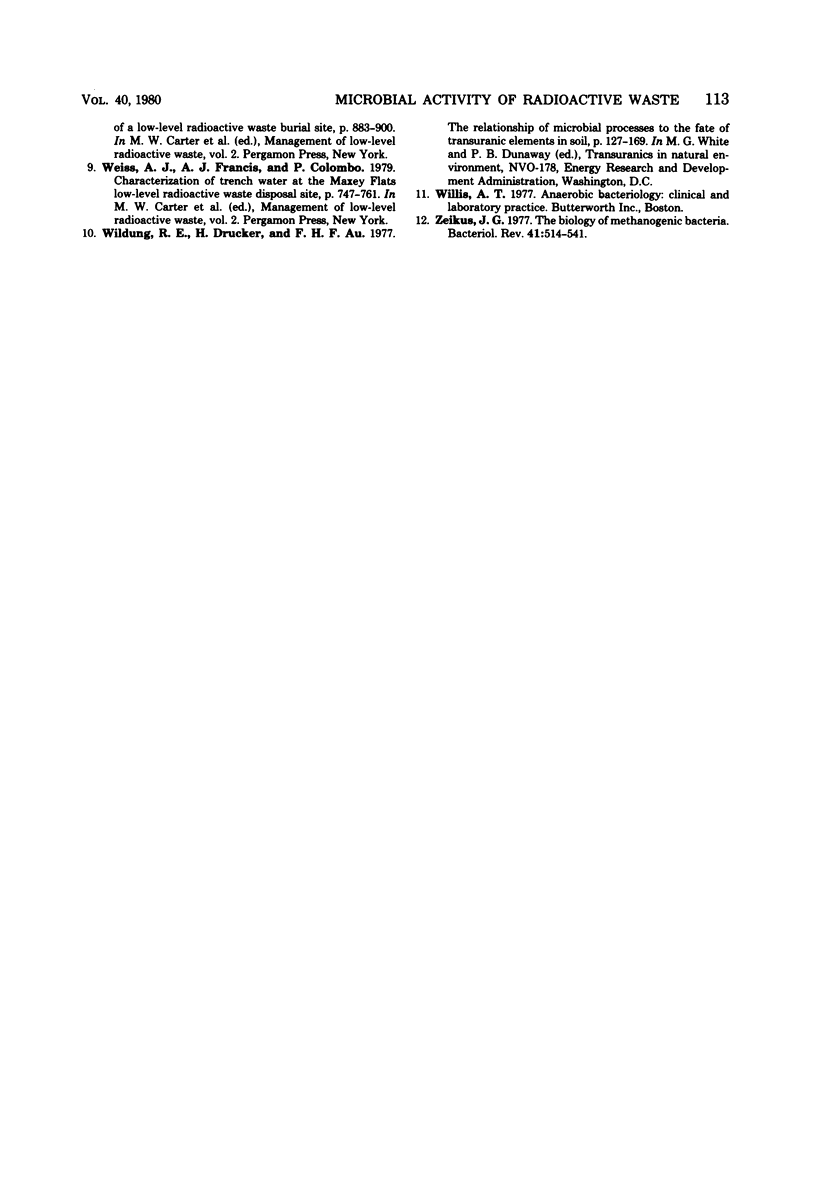
Selected References
These references are in PubMed. This may not be the complete list of references from this article.
- Balch W. E., Wolfe R. S. New approach to the cultivation of methanogenic bacteria: 2-mercaptoethanesulfonic acid (HS-CoM)-dependent growth of Methanobacterium ruminantium in a pressureized atmosphere. Appl Environ Microbiol. 1976 Dec;32(6):781–791. doi: 10.1128/aem.32.6.781-791.1976. [DOI] [PMC free article] [PubMed] [Google Scholar]
- Gat U., Thomas J. D., Clark D. T. Radioactive waste inventory at the Maxey Flats nuclear waste burial site. Health Phys. 1976 Mar;30(3):281–289. doi: 10.1097/00004032-197603000-00004. [DOI] [PubMed] [Google Scholar]
- Zeikus J. G. The biology of methanogenic bacteria. Bacteriol Rev. 1977 Jun;41(2):514–541. doi: 10.1128/br.41.2.514-541.1977. [DOI] [PMC free article] [PubMed] [Google Scholar]


